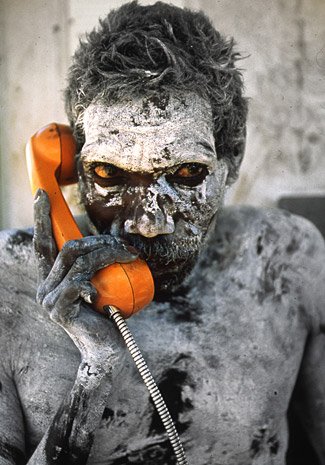Obituary: Vale Penny Tweedie

AT THE AUSTRALIAN GEOGRAPHIC journal, the question of whether and when we might exchange illustrated covers for photographic ones was the subject of much debate for several years before it happened. It wasn’t a decision to be taken lightly; our signature wildlife illustrations were an integral part of the Australian Geographic journal. Ultimately the change came easily; a singular photograph that demanded its place on the cover to herald a wonderful body of work on the pages inside.
Penny Tweedie’s image of a Yolngu boy, Micky, gazing out from the cover, with a mix of defiance and vulnerability, was a defining moment for Australian Geographic when it appeared on the cover of the October 2006 edition. See the image here.
Penny – who died aged 70 at her UK home on 14 January – had come back to Australia in late 2005 to revisit Arnhem Land on behalf of Australian Geographic. Penny began documenting Aboriginal life in Arnhem Land in 1978. The people she came to know there still lived a semi-nomadic life, camping out in their clan country in simple bark shelters, hunting and gathering according to the seasons with the occasional visit to towns which were little more than small settlements with perhaps a clinic and shop.
Penny lived and worked among the artists who painted on seasoned bark with natural ochres. She learned to survive in the bush and spent time around the campfires listening to the timeless stories of the Yolngu people. She was accepted as an “honorary male” and given the skin name, Bulandjan. She recognised that, remote as it was, Arnhem Land was entering a critical period and over the next 28 years, she would return many times to photograph intimately and write eloquently about people, like Tom Noytuna, whom she had come to know as friends. In her most recent visit in 2005, she was struck by the region’s lack of real employment opportunities, chronic health problems and dependence on welfare but also heartened that it remains a sanctuary for traditional Aboriginal culture in the face of so many threats.
Penny was a fearless photojournalist throughout her life, reporting from conflict zones such as Bangladesh and East Timor for publications such as The Sunday Times, Newsweek and Time. She worked on behalf of many non-governmental organisations such as Oxfam and Save the Children, documenting famine and the consequences of war.
Her enduring photo of Tom Noytuna on the phone (pictured) was undoubtedly one of the highlights of the recently-published 25 Years of Australian Geographic Photography book and a print of the image reached the highest auction price at the 2010 Australian Geographic Society Awards.
Penny’s 28-year photographic record of Arnhem Land leaves us with an unequalled testimony of a people in transition, viewed, not so much with the objectivity of a disinterested recorder, but from a place of deep affection, respect and admiration born of a genuine commitment to tell their stories as they wanted them to be told.


